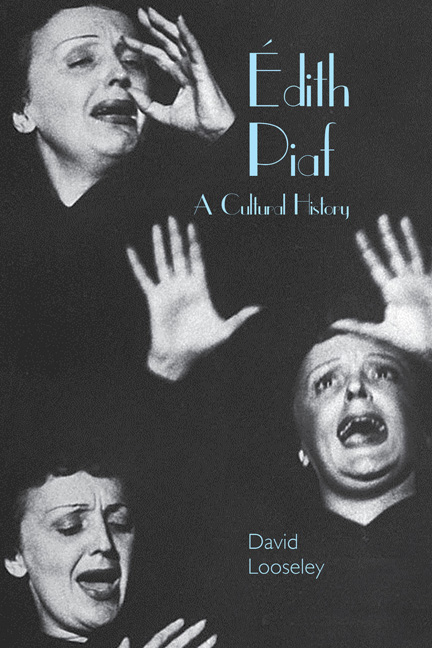Introduction
Summary
On 24 January 2015, the death of British wartime prime minister Sir Winston Churchill half a century before was commemorated. On 22 November 2013, the world had remembered the assassination in 1963 of John F. Kennedy, president of the United States, aged only 46. A few weeks before, on 10 October 2013, France and other countries had marked the fiftieth anniversary of Édith Piaf's equally premature passing, at 47.
Equating two epoch-making world leaders with a popular vocalist sounds incongruous to say the least; but, as fiftieth anniversaries go, it's hard to find more appropriate comparisons. For Édith Piaf was never just a singer. From the very beginning of her career in 1935, when she was not yet 20, she was recognised as culturally singular. And by the centenary of her birth in 2015, she'd become not only France's favourite female singer of all time, but also an instantly recognisable global icon in her simple black dress, like Kennedy with his American smile and Churchill with his V-for-Victory sign. Like them, Piaf lives outside time. She is, of course, an emblem of French chanson, but also of French identity, human resilience in the face of suffering, and that impalpable totem, ‘the people’. It was no surprise that during the historic march in Paris on 11 January 2015, when over a million people proclaimed France's unity in the face of terrorism after three days of deadly attacks in the city, Piaf songs were reportedly blasted from apartments along the route from the Place de la République to the Place de la Nation.
In this book, I want to examine how the cultural phenomenon known as Édith Piaf came into being and what it has come to mean, what purposes it has served. My overarching argument is that this phenomenon was deliberately invented. Embedded in the innumerable representations and recollections of her, including her own, there is in fact a paradox. Although she's frequently depicted as all too real, earthy, natural, authentic, she's also said to be keenly self-aware and calculatedly staged in both her performances and her life—or, to put this more contentiously, to be fabricated. This paradox is seldom acknowledged, other than in the conventional showbiz rhetoric which insists that a celebrity is an ‘intensely private’ person hiding behind a public persona. But I would suggest there's a lot more to it than that.
- Type
- Chapter
- Information
- Édith PiafA Cultural History, pp. 15 - 24Publisher: Liverpool University PressPrint publication year: 2015



